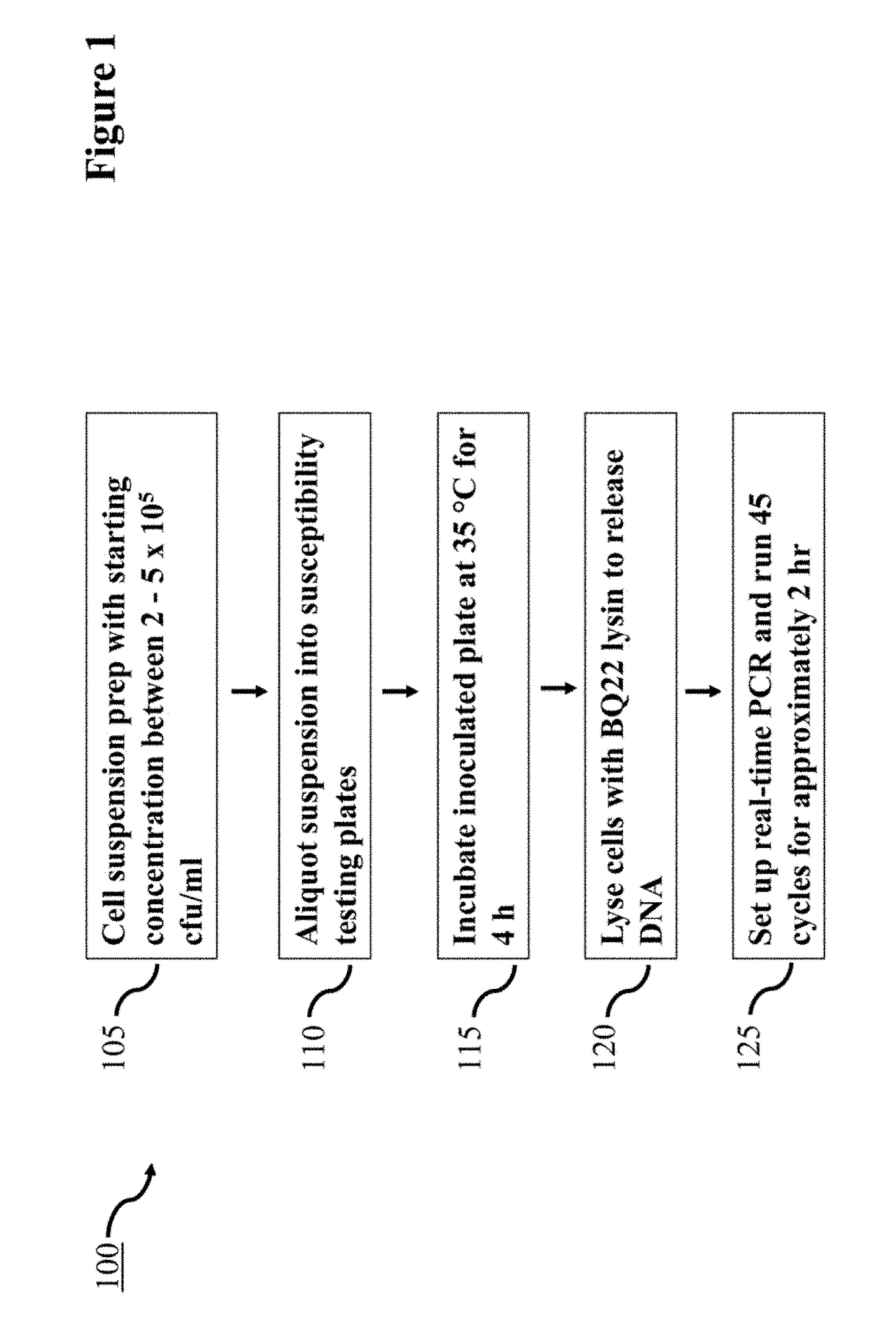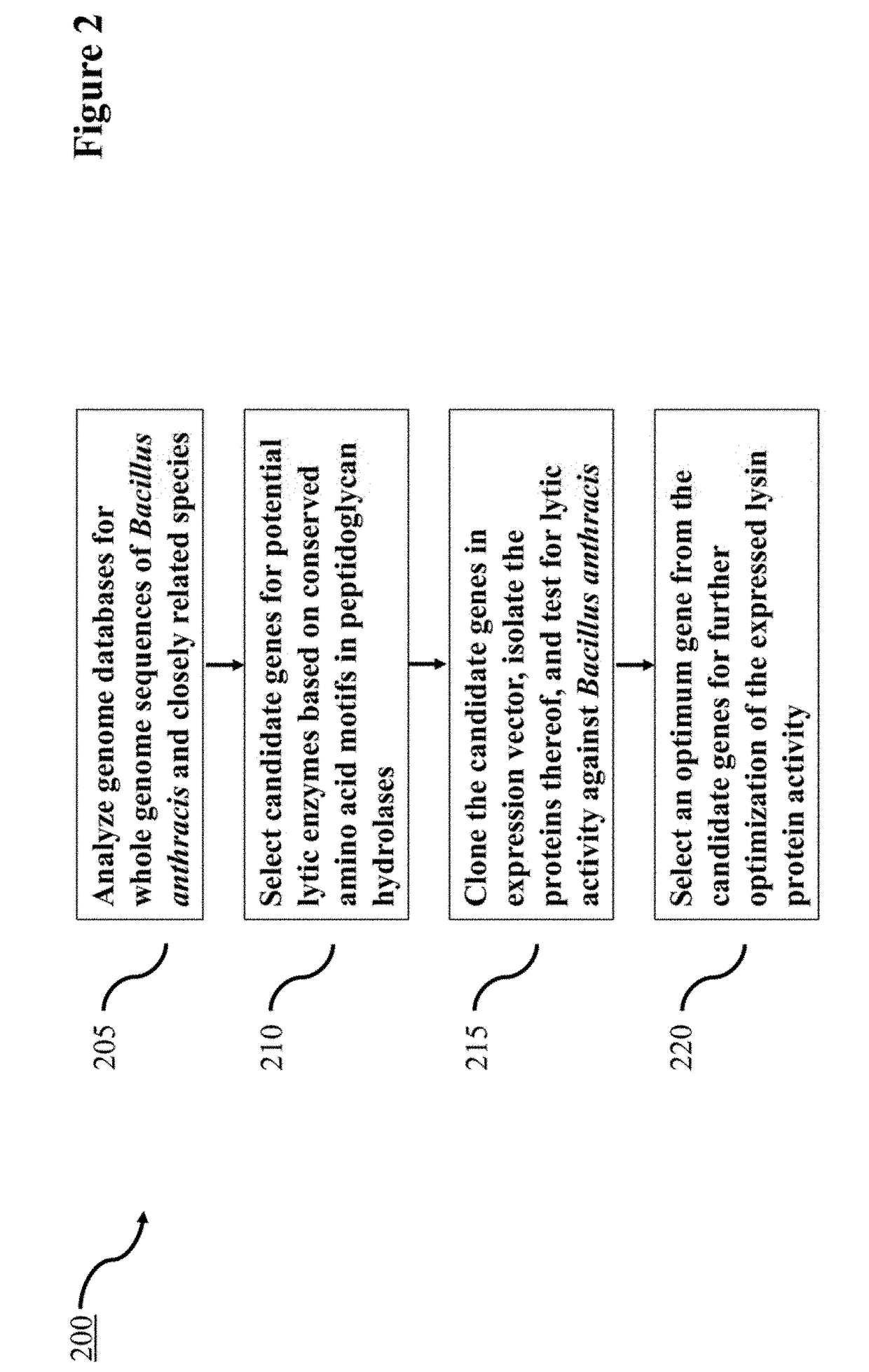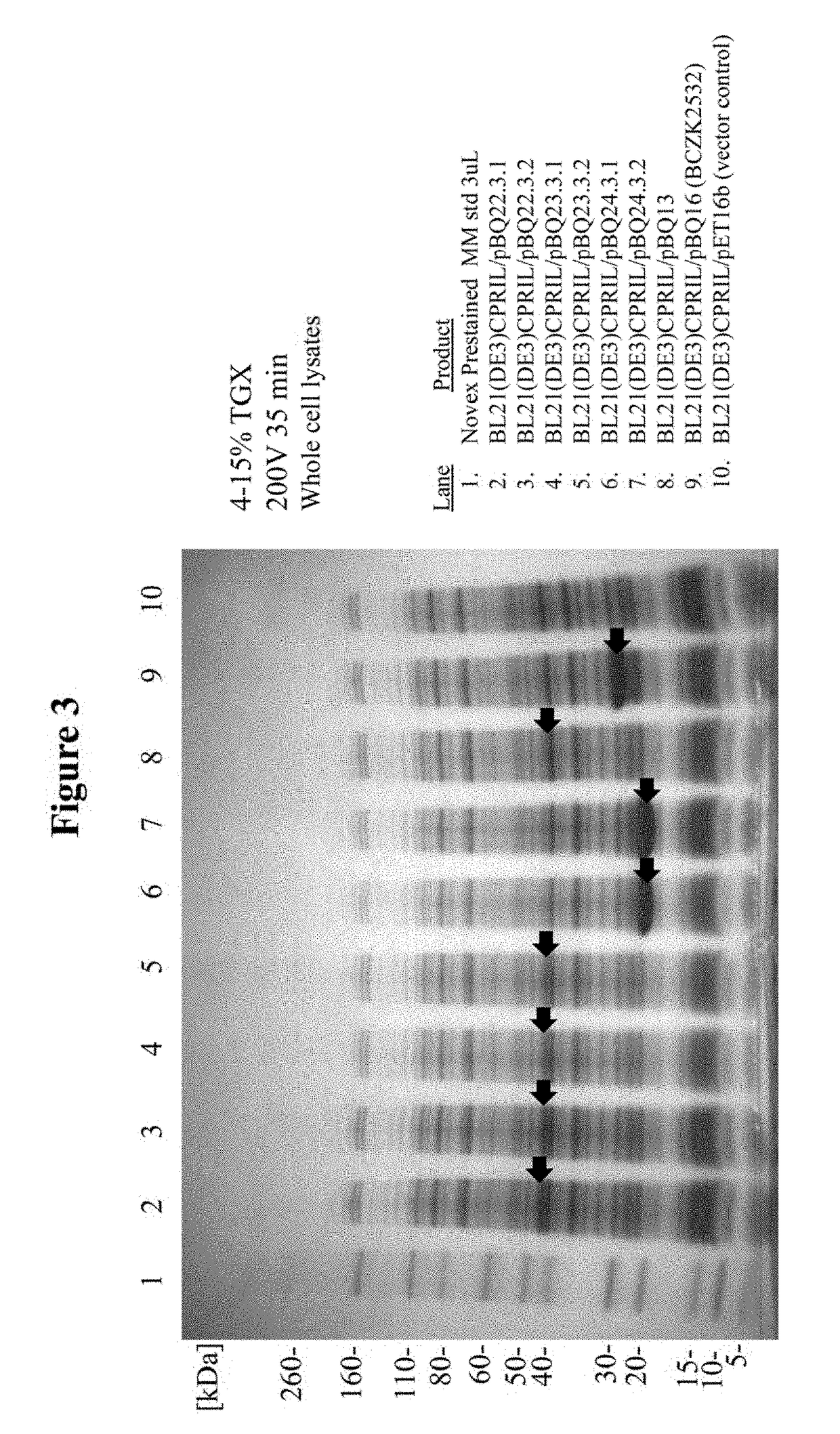Lysin Agent and Method of Use for Diagnostic Testing
- Summary
- Abstract
- Description
- Claims
- Application Information
AI Technical Summary
Benefits of technology
Problems solved by technology
Method used
Image
Examples
examples
[0215]In the examples below, pBQ13 encoding BQ13 (BA_2528_wild type), and derivatives pBQ22, encoding BQ22 (BA_2528 N-terminal 6XHisTag), pBQ23, encoding BQ23 (BA_2528 C-terminal 6XHisTag), and pBQ24 encoding BQ24 (BA_2528 Catalytic domain only, untagged), were expressed from pET16b in E. coli BL21(DE3) Codon Plus RIL to maximize the possibility of expression of soluble active enzyme.
[0216]IPTG-induced whole cell lysates were analyzed by SDS PAGE / Coomassie staining to visualize expression of a protein with the predicted molecular weight; see, for example, FIG. 3.
[0217]Triton X-100 (TX-100)-soluble fractions from the lysates were analyzed by SDS PAGE / Coomassie staining to visualize the presence of the lysin candidate in the crude lysate fraction that was analyzed for activity; see, for example, FIG. 4.
[0218]Lysins were assayed for activity by monitoring the decrease in A600 of Bacillus anthracis Sterne at 35° C. upon addition of TX-100 extracted crude E. coli lysates of IPTG induced ...
example i
Example Bacterial Strains and Growth Conditions:
[0220]Escherichia coli (E. coli) strains are cultured in Luria-Bertani broth (LB, Difco) at 28° C. Strain BL21(DE3) Codon Plus RIL (Stratagene), which lacks the outer membrane proteases Lon and OmpT, and which has a plasmid that encodes rare tRNAs for codons present in AT—rich organisms (such as Bacillus anthracis), was chosen for expression of lysin proteins. Ampicillin (Amp) is used at a concentration of 100 μg / mL in plates and at 125 μg / mL in liquid medium. Chloramphenicol (Cam) was used at 34 μg / mL in plates and liquid medium. The concentration of chloramphenicol was increased to 50 μg / mL in overnight cultures.
example ii
DNA Isolation and Manipulation:
[0221]Candidate lysin genes are amplified by PCR from strain specific genomic DNA using candidate lysin (CL)-specific primers that contain restriction sites compatible with the multi-cloning site of pET16b. PCR products are purified using a Qiagen PCR purification kit (Qiagen, Inc., Hilden, Germany) according to the manufacturer's instructions, and the concentration of the amplified DNA is determined using a Nanodrop 1000 spectrophotometer (X-Rite, Grand Rapids, Mich.). DNA fragments encoding the genes of interest are ligated into the pET16b(+) vector (Novagen), placing the candidate lysin sequence under the transcriptional control of the T7 promoter and under the translational control of the pET16b(+) strong RBS. Plasmid pET16b was chosen for expression of lysin proteins because it encodes lacI for high level repression of transcription prior to induction with IPTG. Ligation mixtures are transformed to E. coli XL10 Gold (Stratagene) according to the m...
PUM
| Property | Measurement | Unit |
|---|---|---|
| Fraction | aaaaa | aaaaa |
| Fraction | aaaaa | aaaaa |
| Fraction | aaaaa | aaaaa |
Abstract
Description
Claims
Application Information
 Login to View More
Login to View More - R&D
- Intellectual Property
- Life Sciences
- Materials
- Tech Scout
- Unparalleled Data Quality
- Higher Quality Content
- 60% Fewer Hallucinations
Browse by: Latest US Patents, China's latest patents, Technical Efficacy Thesaurus, Application Domain, Technology Topic, Popular Technical Reports.
© 2025 PatSnap. All rights reserved.Legal|Privacy policy|Modern Slavery Act Transparency Statement|Sitemap|About US| Contact US: help@patsnap.com



